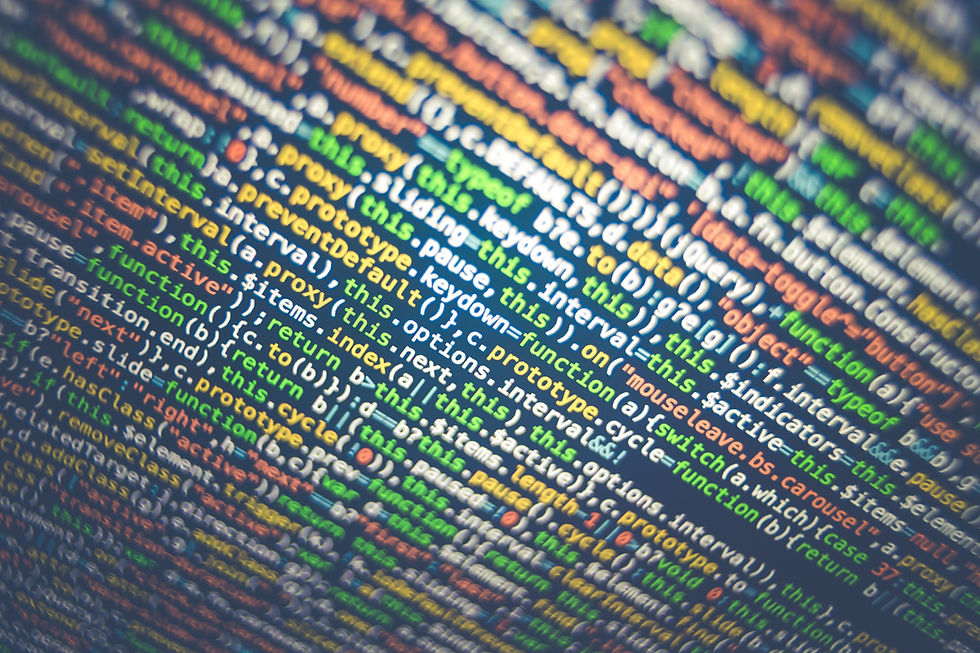The Power of the Blind Spot
- Rebecca Roe
- Aug 14
- 3 min read
"Until you make the unconscious conscious, it will direct your life and you will call it fate." - Carl Jung
We can’t change what we can’t see.
That’s why blind spots are the sneaky little buggers running the show until we shine a light on them. And here’s the thing: whether you’re working on yourself, leading a team, or running an organisation, finding and facing those blind spots is the gateway to real, lasting transformation.
The problem? We live in a culture that thinks honesty is a good idea… in theory. In practice, we sugar-coat feedback until it’s basically fairy floss, or we keep quiet altogether because, heaven forbid, we make someone uncomfortable.
But withholding the truth doesn’t protect people. It protects the status quo. And the status quo has never transformed anyone or anything.

Why We Dodge the Very Thing That Could Free Us
Humans have a long-standing habit of stuffing away the parts of ourselves we’ve decided are “too much,” “too messy,” or “not okay.”
We don’t deal with them. We bury them like toxic waste in the backyard.
Then we wonder why we keep burning out, people-pleasing, self-sabotaging, or repeating the same patterns at work and in life. Spoiler alert: it’s because those parts are still there, now quietly running our behaviour from the driver’s seat.
Psychologists Joseph Luft and Harrington Ingham gave this hidden zone a name in 1955: The Blind Spot - the things other people can see about us that we can’t see ourselves.
Facing it isn’t about fixing something “wrong” with you. It’s about reclaiming what you’ve exiled. Because here’s the delicious irony: the bits you’ve been ignoring might just be your greatest untapped power.
My Blind Spot (and How Addiction Shone a Light on It)
Seventeen years ago, I walked into an addiction clinic for the first time. Terrified. Convinced it was proof there was something broken in me.
At the time, I thought “recovery” meant eradicating the bad bits, like scrubbing mould off a wall. But here’s what I learned: those parts weren’t the enemy. They were messengers.
When I stopped shoving them into a dark cupboard and started listening, the shame lost its grip. I found strength where I thought there was only weakness.
And I wish I could say, “Ta-da! Job done!” but blind spot work is never finished. I still find them. I still get them pointed out (sometimes with love, sometimes with brutal bluntness). And every time, if I choose to stay curious instead of defensive, I grow.
Organisational Blind Spots: Where Innovation Lives
What works for people works for organisations.
When companies choose to go looking for blind spots, challenging assumptions, testing ideas early, surfacing what’s not working - they fast-track innovation and avoid those “well-that-was-a-$2-million-oops” moments.
Dyson gets it. Their culture is built on tearing ideas apart to make them better. They hire artists, furniture designers, contrarians. Anyone who’ll shake up the thinking. New hires get handed a disassembled vacuum on day one. Not to clean floors but to clean up stale thinking.
IDEO, the global design firm, made the shift from “fail never” to “fail fast.” Translation: try things early, mess them up cheaply, and learn before egos (or budgets) get too big to pivot.
Here’s the gold: in both personal and organisational life, mistakes aren’t the enemy. What’s dangerous is the stuff we don’t want to see.

The Kiwi Blind Spot Problem
Now, let’s talk home turf. Our “she’ll be right,” No. 8 wire mentality is great for improvising a fix when the gate’s hanging off the hinge, but it’s rubbish for real growth.
We’re experts at brushing off discomfort and hoping someone else will deal with it. Bad news: no one’s coming. It’s on us.
Bringing the Johari Window to Life
A simple Johari Window exercise in a team can be an absolute game-changer. It can surface:
Misinterpreted feedback styles
Hidden talents
Unspoken ambitions
And it creates space for:
Faster problem-solving
More creative, bold ideas
Accelerated learning
Trust that’s more than just a buzzword on a poster
The model itself is simple:
Open – Known to self and others
Blind – Known to others, not to self
Hidden – Known to self, not to others
Unknown – Unknown to both
The magic is in shifting more from the Blind into the Open through honest, vulnerable conversations.
Here’s the Reality
Transformation, whether personal or organisational, doesn’t come from polishing the shiny bits. It happens when we have the courage to look at the mess.
When we invite all parts of ourselves to the table. The awkward, the brilliant, and the stuff that still needs work, we open the door to:
More authentic connection
More courageous creativity
More fun along the way
The blind spot isn’t a flaw to avoid. It’s the doorway to your next breakthrough.
So… what’s yours?
Much love,
Bec x



